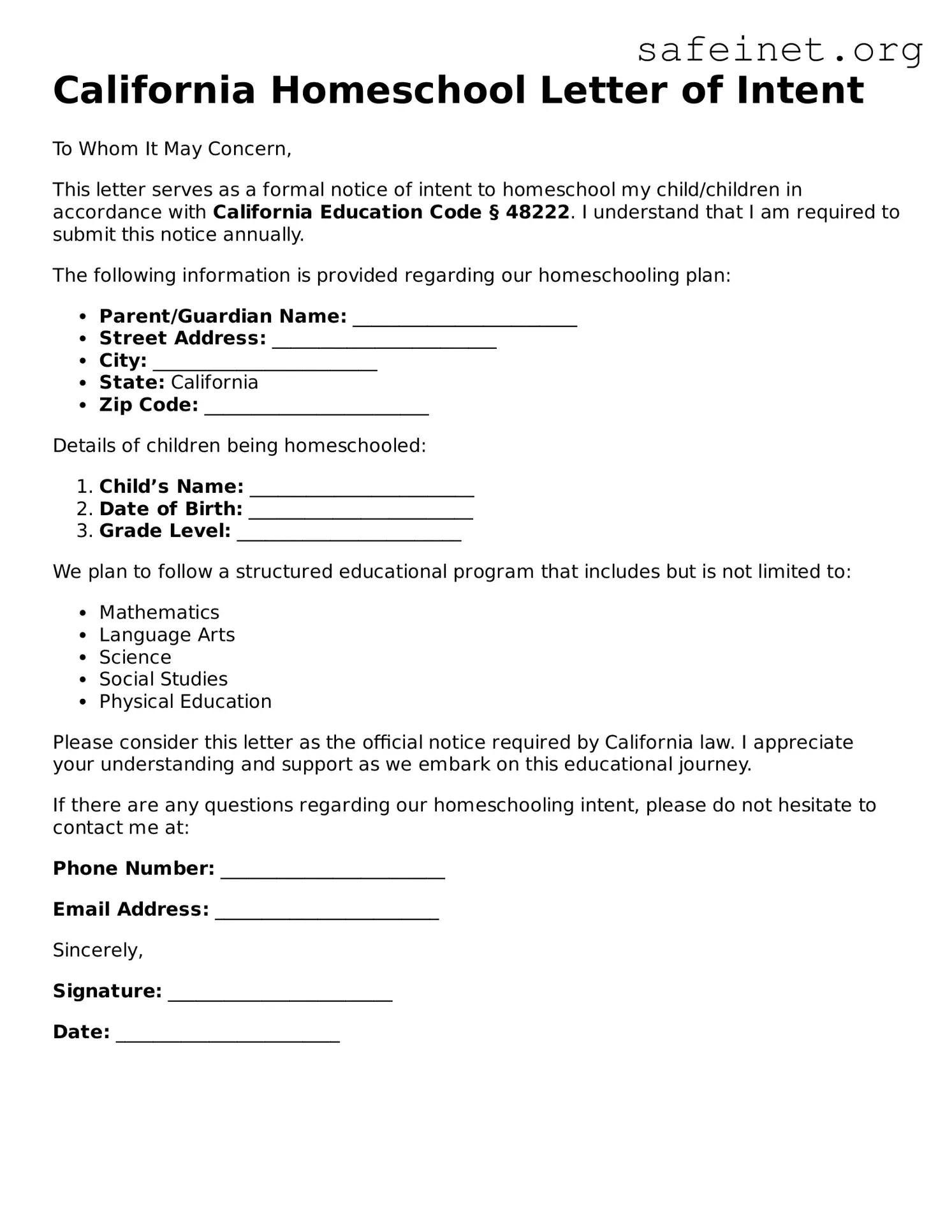What is the California Homeschool Letter of Intent?
The California Homeschool Letter of Intent is a document that parents or guardians submit to inform their local school district of their intent to educate their children at home. This act is part of the legal requirements established under California law for homeschoolers to register their educational program with the local authorities.
Who needs to file a Homeschool Letter of Intent in California?
Parents or guardians who wish to homeschool their children must file this letter. This requirement applies if they are operating a private school or are part of a homeschooling program under the California Education Code. It is an important step to ensure compliance with state regulations.
When should the Homeschool Letter of Intent be submitted?
The letter should be submitted at the beginning of each school year or when a family decides to start homeschooling their child. It is best to file it as early as possible to allow the school district to process the information before the school year starts.
What information is required on the Homeschool Letter of Intent?
The letter typically requires basic information such as the parent's name, the address of the homeschooling site, and the names and ages of the children being homeschooled. Specific formatting may vary, but all essential details should be clearly provided.
Do parents need to send a new Letter of Intent every year?
Yes, parents are generally required to submit a new Homeschool Letter of Intent each school year. This helps maintain updated information with the school district regarding the homeschooling program and ensures compliance with local laws.
Are there any deadlines for submitting the Homeschool Letter of Intent?
While there is no universal deadline, the letter should ideally be submitted before the start of the school year. Some districts may have specific submission periods, so it’s advisable to check with the local education authority for their particular guidelines.
What happens after the Letter of Intent is submitted?
After submission, the local school district may acknowledge receipt of the letter. However, there is no formal approval process for the letter itself. The school district will maintain a record of your homeschooling status, which can be useful if any questions arise in the future.
Is there a specific format for the Letter of Intent?
California does not mandate a specific format for the Letter of Intent, but it should be clear, concise, and include all necessary information. Many families may choose to use a simple template that covers all essential details to ensure clarity and completeness.
What if I fail to submit the Homeschool Letter of Intent?
Failing to submit the letter can potentially lead to complications with the local school district. It could result in a requirement for the child to be enrolled in a public or private school until the issue is resolved. It is important to adhere to the regulations to avoid any unnecessary legal obligations.
Can the content of the Homeschool Letter of Intent be challenged?
The content of the letter is typically not subject to challenge as long as it accurately reflects the educational intentions of the parents. However, the school district may request further information if there are any discrepancies or concerns regarding the homeschooling program.
